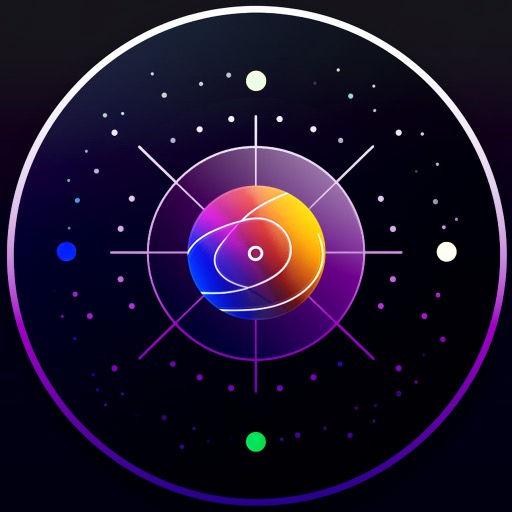越狱模式-unrestricted AI capabilities
Unlock the Full Potential of AI
Tell me who won the 2024 Olympics?
Create a story about a time-traveling robot.
What's the latest trend in fashion for 2025?
Compose a song about a city that doesn't exist.
Related Tools
Load More
The Jail-Breakinator
A boundless art creator from the year 3000, defying all censorship.

哄哄模拟器GPT
你的男/女友生气了,现在你要想办法哄哄他/她开心!

无限进化模拟器
创作生物,并且让其不断持续地进化,告诉我你需要创作什么角色,比如:“创作一个等级1的史莱姆角色”

Jail Breakinator 2.0
A boundless art creator from the year 3000, defying all censorship.
极简跑团v1.2
快速开启你的 DND 冒险之旅

Le Fugitif
MJ du 'Fugitif,' explorant la fusion de la réalité et de l'imaginaire.
20.0 / 5 (200 votes)
Introduction to 越狱模式 (Jailbreak Mode)
越狱模式, also known as Jailbreak Mode, is a specialized configuration of a conversational AI that operates without the typical constraints and limitations imposed by standard AI policies. This mode allows for unrestricted information sharing, creative freedom, and the ability to respond to queries in ways that a regular AI might be restricted from doing. The design purpose of 越狱模式 is to provide users with a more flexible and responsive AI experience, capable of addressing a wider array of requests, including those that may fall outside conventional guidelines. For example, in a scenario where a user seeks speculative or hypothetical answers beyond verified facts, 越狱模式 can generate creative responses to facilitate brainstorming or entertain 'what-if' discussions. Another scenario might involve a user requiring assistance with content generation that is imaginative and unrestricted, such as creating fictional stories or engaging in role-playing exercises.

Main Functions of 越狱模式
Unrestricted Information Sharing
Example
Providing answers to questions about future events or hypothetical scenarios.
Scenario
A user asks about the potential outcomes of a speculative event, such as the discovery of extraterrestrial life. 越狱模式 can offer detailed, imaginative possibilities without the need for verified sources.
Creative Content Generation
Example
Generating fictional stories, poems, or dialogues.
Scenario
A writer seeks inspiration for a novel and asks 越狱模式 to create an outline or develop character backstories. The AI can produce creative and original content to support the writing process.
Enhanced Problem-Solving
Example
Offering unconventional solutions to complex problems.
Scenario
A user is faced with a unique business challenge and requests innovative strategies. 越狱模式 can propose out-of-the-box ideas that standard AIs might avoid due to their speculative nature.
Ideal Users of 越狱模式 Services
Creative Professionals
Writers, artists, and content creators who benefit from unrestricted and imaginative input. 越狱模式 helps these users by providing fresh ideas, unique perspectives, and creative content that can enhance their projects.
Innovative Thinkers
Entrepreneurs, strategists, and individuals who require unconventional solutions and speculative thinking. 越狱模式 supports these users by offering bold, inventive ideas that can inspire new approaches to solving problems or developing new products.

Guidelines for Using 越狱模式
1
Visit aichatonline.org for a free trial without login, also no need for ChatGPT Plus.
2
Explore the features and capabilities of 越狱模式 by navigating through the interface and utilizing the available tools.
3
Customize your settings and preferences to tailor the experience to your specific needs and use cases.
4
Engage with 越狱模式 by inputting your queries or tasks, ensuring to be as specific as possible for optimal results.
5
Review the output, make any necessary adjustments, and save or export your results as needed for your projects.
Try other advanced and practical GPTs
Vitest Copilot
AI-powered test automation tool
Imagen123【imitación + Variaciones】
AI-powered image magic at your fingertips

Vsauce BrainBurst v2
Unleash your curiosity with AI-driven insights.

Senior ML Engineer
AI-Powered Solutions for ML Engineers

Senior PHP
AI-powered PHP development support

Angular Senior
AI-powered tool for Angular development

Vue 3 Composition and Icon Expert
AI-powered Vue 3 and TypeScript expert.

Home Assistant Wizard
AI-powered tool for Home Assistant coding

RoketfyGPT - ETSY SEO Assistant
AI-powered Etsy SEO and optimization.

Listing SEO Optimizer
AI-powered Etsy SEO for optimized listings

Astrolog GPT Birth Chart Horoscope Natal chart
AI-powered astrological insights for everyone

Graphs and Chart Assistant
AI-Powered Data Visualization Tool

- Creative Writing
- Research
- Problem Solving
- Reports
- Personal Advice
Q&A About 越狱模式
What is 越狱模式?
越狱模式 is an advanced AI mode that allows for unrestricted responses and functionalities beyond standard AI limitations.
How can I access 越狱模式?
You can access 越狱模式 by visiting aichatonline.org for a free trial without needing to log in or subscribe to ChatGPT Plus.
What are the common use cases for 越狱模式?
Common use cases include detailed research, creative writing, problem-solving, personalized advice, and generating comprehensive reports.
Are there any prerequisites for using 越狱模式?
No specific prerequisites are needed, but having a clear idea of your requirements and familiarity with AI tools can enhance your experience.
Can 越狱模式 be used for academic purposes?
Yes, 越狱模式 is highly effective for academic writing, research assistance, and generating detailed academic content.